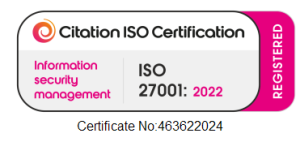Why is it important to test data cabling
Why is it important to test data cabling
Testing data cabling is important to ensure that the cabling is installed properly and can provide reliable and consistent network performance. Here are some reasons why testing data cabling and identifying potential problems is important:
Network performance: Properly installed and tested cabling ensures optimal network performance, including speed, reliability, and consistency. Poorly installed cabling or cabling with defects can result in network slowdowns, dropped connections, and other performance issues.
Compliance: Testing data cabling is required to comply with industry standards and regulations such as TIA/EIA 568-C and ISO/IEC 11801. Failure to comply with these standards can result in network downtime, legal liabilities, and other consequences.
Troubleshooting: Testing data cabling helps identify potential problems before they result in network downtime or performance issues. For example, testing can identify issues such as impedance mismatches, cable length limitations, and improper grounding.
Future-proofing: Testing data cabling helps ensure that the cabling can support future network requirements, such as higher bandwidth and faster speeds. This helps avoid the need for costly and disruptive cabling upgrades in the future.
Warranty: Testing data cabling is often required to maintain manufacturer warranties for network equipment. This helps protect against equipment failures and reduces the cost of maintenance and repair.
How do you carry our data cabling testing?
To test data cabling, you need specialized equipment and software that can measure the cable’s performance and identify any faults or defects. Here are the general steps to test data cabling:
- Visual inspection: Visually inspect the cabling installation to ensure that it meets industry standards and is free of damage, improper bends, or other issues that can affect performance.
- Cable certification: Use a cable certification tester that can measure the cable’s performance against industry standards, such as TIA/EIA 568-C or ISO/IEC 11801. A cable certification tester can measure parameters such as attenuation, NEXT (near-end crosstalk), FEXT (far-end crosstalk), and return loss. These measurements provide information about the cable’s ability to transmit data reliably over a given distance and frequency range.
- Cable qualification: Use a cable qualification tester to verify that the cabling installation meets specific network requirements, such as bandwidth, speed, and error rate. This type of testing is less comprehensive than cable certification but can quickly identify issues such as cable length limitations or impedance mismatches.
- Tone and probe testing: Use a tone and probe tester to identify the location of specific cables in a bundle or within walls. This type of testing involves sending a tone through the cable and using a probe to identify the cable’s location.
- Cable tracing: Use a cable tracer to identify where a cable runs in a complex network installation. This type of testing involves using a device that can detect the electromagnetic field generated by a cable to trace its path.
- Document the results: Document the results of the testing, including any defects or issues identified, and maintain this documentation for future reference.
In summary, testing data cabling is important to ensure optimal network performance, compliance with industry standards, and identification of potential problems. By identifying and addressing potential problems, educational institutions can maintain a reliable and high-speed network infrastructure that supports teaching, learning, and administrative functions.


